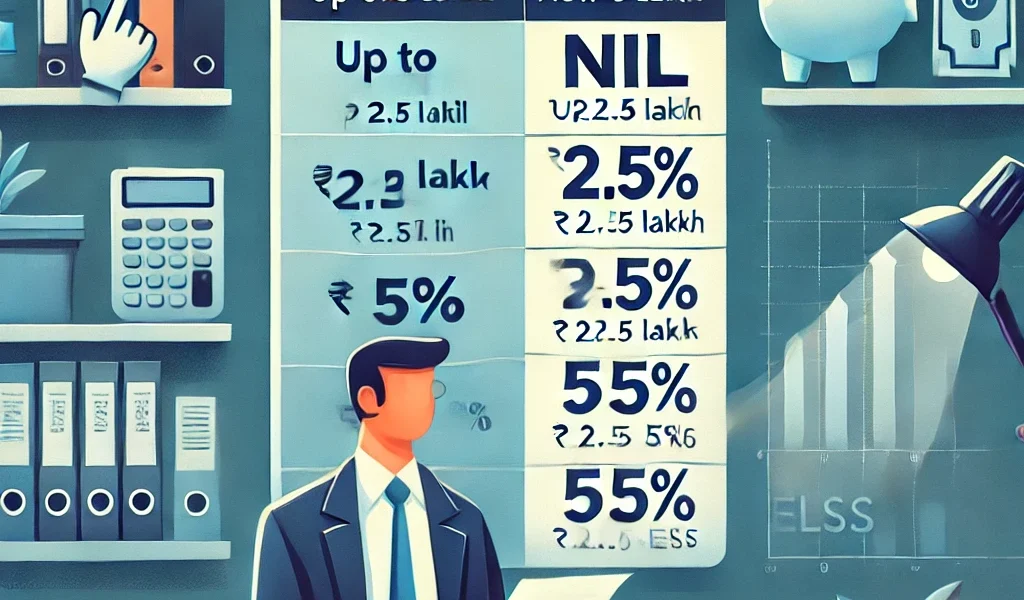Income tax is a critical part of financial planning, and understanding tax slabs and rates can help you make informed decisions to optimize your tax liability. In 2025, tax slabs continue to categorize taxpayers based on their annual income, ensuring a progressive taxation system where higher earnings attract higher tax rates. Here’s a detailed guide to understanding income tax slabs and rates for 2025.
What Are Income Tax Slabs?
Income tax slabs represent the structure under which taxpayers are divided into categories based on their income. Each category or “slab” is taxed at a specific rate. This system ensures that individuals with higher incomes contribute a larger share to the nation’s revenue.
Key Highlights of Income Tax Slabs for 2025
- Two Tax Regimes: Taxpayers can choose between the Old Tax Regime and the New Tax Regime, each offering distinct advantages.
- Basic Exemption Limit: The exemption limit remains different for various categories of taxpayers:
- General taxpayers: ₹2.5 lakh
- Senior citizens (60 years and above): ₹3 lakh
- Super senior citizens (80 years and above): ₹5 lakh
- Surcharge and Cess: High-income individuals are subject to additional surcharges and a 4% health and education cess on the total tax liability.
Income Tax Slabs and Rates for FY 2025-26
Old Tax Regime
Under the Old Tax Regime, taxpayers can avail themselves of various exemptions and deductions, such as HRA, Section 80C, and Section 80D. Here are the applicable tax slabs:
| Income Range (₹) | Tax Rate |
|---|---|
| Up to 2,50,000 | Nil |
| 2,50,001 to 5,00,000 | 5% |
| 5,00,001 to 10,00,000 | 20% |
| Above 10,00,000 | 30% |
New Tax Regime
The New Tax Regime offers lower tax rates but eliminates most exemptions and deductions. It’s suitable for taxpayers with simpler financial situations.
| Income Range (₹) | Tax Rate |
| Up to 3,00,000 | Nil |
| 3,00,001 to 6,00,000 | 5% |
| 6,00,001 to 9,00,000 | 10% |
| 9,00,001 to 12,00,000 | 15% |
| 12,00,001 to 15,00,000 | 20% |
| Above 15,00,000 | 30% |
How to Choose Between the Old and New Tax Regime
1. When to Opt for the Old Tax Regime:
- If you claim significant deductions under Section 80C (e.g., PPF, EPF, ELSS) and Section 80D (medical insurance premiums).
- If you benefit from exemptions like HRA or LTA.
2. When to Opt for the New Tax Regime:
- If you do not have substantial investments or eligible expenses to claim deductions.
- If you prefer a simplified tax structure with lower rates.
Tips to Optimize Your Tax Liability
- Plan Investments Early: Use instruments like ELSS, NPS, and PPF under Section 80C to maximize benefits.
- Claim All Eligible Deductions: Don’t miss out on deductions for medical insurance, home loan interest, and education loans.
- Evaluate Both Regimes: Calculate your tax liability under both regimes to identify which one saves you more money.
- Use Tax-Free Income Options: Invest in tax-free bonds or take advantage of agricultural income exemptions.
Common Mistakes to Avoid
- Neglecting to File on Time: Filing your return after the due date can attract penalties and interest.
- Ignoring the New Regime Option: Not evaluating both regimes may lead to higher taxes.
- Failing to Declare All Income: Ensure you report all sources of income, including freelance work or rental income.
Conclusion
Understanding income tax slabs and rates for 2025 is essential for effective tax planning. Whether you choose the Old or New Tax Regime, aligning your financial decisions with the tax structure can help you minimize liabilities and maximize savings. Start planning today to secure a more financially sound future.




